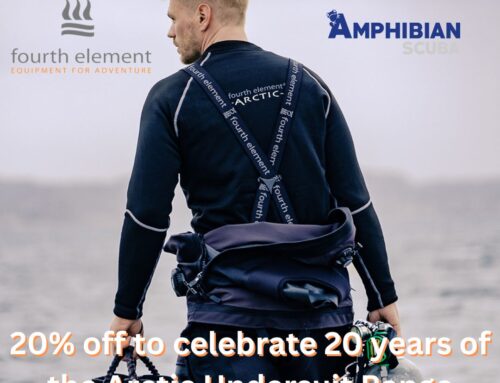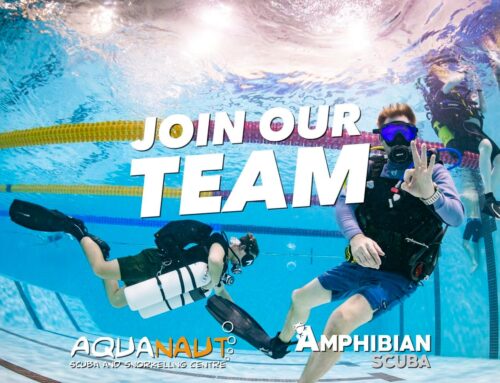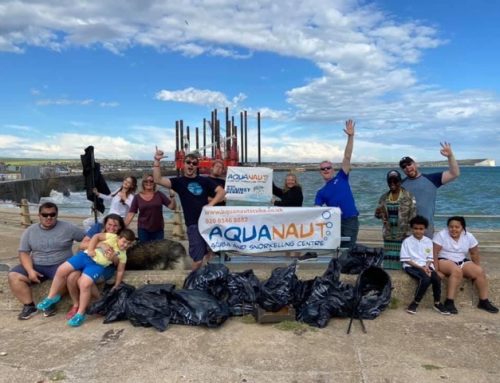A day’s diving with the Nautical Archaeology Society-18th July 2018
 There is something romantic, exhilarating and exciting about diving a submarine-that the one in question “Holland 5” happened to be the first submarine commissioned by the Royal Navy in January 1903 meant that when Mark Beattie-Edwards, CEO of the NAS gave a talk at an Aquanauts Club Night earlier in the year Martin Edser and I were hooked.
There is something romantic, exhilarating and exciting about diving a submarine-that the one in question “Holland 5” happened to be the first submarine commissioned by the Royal Navy in January 1903 meant that when Mark Beattie-Edwards, CEO of the NAS gave a talk at an Aquanauts Club Night earlier in the year Martin Edser and I were hooked.
So it was that on a beautiful Wednesday morning (18th July) Martin and I found ourselves at  Eastbourne’s Sovereign Harbour loading up the boat of Dive125 along with 10 other divers. Getting to dive two wrecks and in this case two protected wrecks is rare in the channel and timing the slacks must be right. That Steve Johnson from Channel Diving was loading the kit for another group of expectant divers on to his boat next to us at the same time as they prepared for the Ocean Liner day (the combination of the Alaunia and Oceana, probably represents the best dives in this part of the channel at recreational diving depths) reminded Martin and I what we had ‘sacrificed’ to be with the NAS. They had to be great dives and we weren’t disappointed.
Eastbourne’s Sovereign Harbour loading up the boat of Dive125 along with 10 other divers. Getting to dive two wrecks and in this case two protected wrecks is rare in the channel and timing the slacks must be right. That Steve Johnson from Channel Diving was loading the kit for another group of expectant divers on to his boat next to us at the same time as they prepared for the Ocean Liner day (the combination of the Alaunia and Oceana, probably represents the best dives in this part of the channel at recreational diving depths) reminded Martin and I what we had ‘sacrificed’ to be with the NAS. They had to be great dives and we weren’t disappointed.
 One of the joys of the day was Mark. His knowledge and preparation are first class and his enthusiasm infectious. As we waited in the harbour lock a briefing and history lesson about the Holland 5 ensued . It was rediscovered in September 2005 6 miles off the coast. Already obsolete when it was launched-the speed of technological and engineering development not confined to our own time-it was being sent to be scrapped at Shearness in August 1912 when it foundered and sunk off Beachy Head. One theory being that the torpedo hatch had been left open-to the great joy of all divers!
One of the joys of the day was Mark. His knowledge and preparation are first class and his enthusiasm infectious. As we waited in the harbour lock a briefing and history lesson about the Holland 5 ensued . It was rediscovered in September 2005 6 miles off the coast. Already obsolete when it was launched-the speed of technological and engineering development not confined to our own time-it was being sent to be scrapped at Shearness in August 1912 when it foundered and sunk off Beachy Head. One theory being that the torpedo hatch had been left open-to the great joy of all divers!
 Mark went down first to make sure the shotline was on the submarine and then we followed in our buddy pairs. At 30 metres to the seabed it was a nitrox 32% dive though some dived it on air leaving them with a 20/25 minute rather than a 45 minute one. It is not a big submarine so 6 metres visibility meant that when you were on the conning tower the bow and stern were almost visible and 12 divers meant it felt rather crowded at times. It is however almost perfectly preserved-you can’t penetrate and join the congar eel that lives inside and pokes its head out of one of the hatches though we were told that one cave diver has boasted that he thought he could fit through the torpedo tube-which is something I would pay money to see. Each pair of divers was supplied with a laminated drawing of the submarine with all the key features identified and I was surprised how easy it was to find everything and how rewarding it was to have done your homework before descending. The Holland 5 sits on the seabed the right way up and there was plenty of time to work our way around the wreck 4 times at different depths with Martin as usual taking lots of photographs. The Holland 5 was alive with sea life too-lobsters, crabs, blennies and much more. Our dive plan had indicated that after 30 minutes we would start to owe decompression time so with 35 minutes mark fast approaching we started to make our way up the shot line which was in the middle of the wreck. In the end there was only 5 minutes required for deco (we had planned quite conservatively) plus the safety stop and with twin sets there was plenty of gas on our backs. Always a reassuring thought! An
Mark went down first to make sure the shotline was on the submarine and then we followed in our buddy pairs. At 30 metres to the seabed it was a nitrox 32% dive though some dived it on air leaving them with a 20/25 minute rather than a 45 minute one. It is not a big submarine so 6 metres visibility meant that when you were on the conning tower the bow and stern were almost visible and 12 divers meant it felt rather crowded at times. It is however almost perfectly preserved-you can’t penetrate and join the congar eel that lives inside and pokes its head out of one of the hatches though we were told that one cave diver has boasted that he thought he could fit through the torpedo tube-which is something I would pay money to see. Each pair of divers was supplied with a laminated drawing of the submarine with all the key features identified and I was surprised how easy it was to find everything and how rewarding it was to have done your homework before descending. The Holland 5 sits on the seabed the right way up and there was plenty of time to work our way around the wreck 4 times at different depths with Martin as usual taking lots of photographs. The Holland 5 was alive with sea life too-lobsters, crabs, blennies and much more. Our dive plan had indicated that after 30 minutes we would start to owe decompression time so with 35 minutes mark fast approaching we started to make our way up the shot line which was in the middle of the wreck. In the end there was only 5 minutes required for deco (we had planned quite conservatively) plus the safety stop and with twin sets there was plenty of gas on our backs. Always a reassuring thought! An  excellent dive and one I would recommend to all if you can find the time.
excellent dive and one I would recommend to all if you can find the time.
There was a 3 hour wait for the next slack and the dive at Norman’s Bay. The time passed more quickly than I expected-partly because of all the fun and games trying to retrieve the shot-Mark had to go in again but that is another story. There was also Mark’s briefing. When Martin and I signed up for the days diving all I could recall about second protected wreck was that it was essentially a lot of canons scattered over the seabed at around 12 metres. There was a lot more to it than that. Under the Protection of Wrecks Act(1973) our second site had been designated in 2006 as an English or Dutch ship of unknown identity dating between the 17th and 18th century. Mark explained that originally there was speculation about it being the English 70 gun ship “Resolution” lost in the Great Storm of 1703.Studies of its parent timber however revealed that this had come from Germany or the low countries of Europe rather than England. The NAS’s theory is that it is the remains of the Wapen van Utrecht a 64 gun Dutch ship lost along with 9 other Dutch ships in the Battle of Beachy Head in 1690-sunk by the French. We were warned that much of the remaining timber is hidden by mud with the guns some 2 metres long and others over 3 metres spread across an area defined by ballast and hull timbers. More importantly Mark said visibility is poor so it is essential to dive in slow motion with expertly controlled buoyancy. How poor we were to discover later. Wraysbury all is forgiven!
 Again Mark went in first to secure the shot line to the entry of the site -a pair of large iron wheels. In terms of entering the water buddy pairs were staggered-simply as a device to help with navigating an area with dreadful visibility. Each pair was furnished with a site map-indicating the position of ropes that would lead you to the canons and large anchor. We were also told that we should really dive the site in April when there is 5 metres of visibility-now they tell us! Ever the optimist Martin camera in hand led the way. This was diving as you will rarely experience anywhere else-and great fun. Landing on the iron wheels was easy-finding the guide rope was not but after a while you got the hang of it. There are 51 guns across the site(the NAS expect to find more as the site is explored further)-some lying flat, some at 45 degree angles and some creating arches and swim throughs. As the ropes that held them in place rotted and as the decks on which they stood disintegrated so the canons fell and found the resting places where they now stood. It quickly became apparent that you had a choice to either stay very close to the bottom and rope and risk stirring up silt and mud or stay a couple of metres higher and find you could not navigate your way around and miss the guns. At the centre of the site was a large anchor serving amongst other things as a useful landmark-though some of our fellow divers told us later that they completely missed it such was the poor visibility. Even with the site map and the helpfully placed upturned buckets with large numbers printed on them-all designed to assist orientation-it was still necessary to occasionally use your compass to locate the next set of canons-which if I let you into a secret tend to all look the same. Coming across other divers was at the same time a reassurance and a nightmare. It was good to know you were not alone but almost impossible to separately identify your buddy from the other divers when the only distinguishing feature was the brightness of each others lamp. I thought I had lost Martin on more than one occasion. I must stress however that despite the challenge with buoyancy and navigation it was a unique dive and really enjoyable. On the one hand it felt like being part of an underwater parlour game-hunt the canons and on the other immersed in a real life historical adventure. As I said diving like you will rarely experience. Finding the shot line was easier than we had expected(though we always knew that putting up an SMB would be simple if we really did get lost) as there were arrows every now and again on the ropes pointing to the exit-a maze with helpful clues-the NAS think of everything.
Again Mark went in first to secure the shot line to the entry of the site -a pair of large iron wheels. In terms of entering the water buddy pairs were staggered-simply as a device to help with navigating an area with dreadful visibility. Each pair was furnished with a site map-indicating the position of ropes that would lead you to the canons and large anchor. We were also told that we should really dive the site in April when there is 5 metres of visibility-now they tell us! Ever the optimist Martin camera in hand led the way. This was diving as you will rarely experience anywhere else-and great fun. Landing on the iron wheels was easy-finding the guide rope was not but after a while you got the hang of it. There are 51 guns across the site(the NAS expect to find more as the site is explored further)-some lying flat, some at 45 degree angles and some creating arches and swim throughs. As the ropes that held them in place rotted and as the decks on which they stood disintegrated so the canons fell and found the resting places where they now stood. It quickly became apparent that you had a choice to either stay very close to the bottom and rope and risk stirring up silt and mud or stay a couple of metres higher and find you could not navigate your way around and miss the guns. At the centre of the site was a large anchor serving amongst other things as a useful landmark-though some of our fellow divers told us later that they completely missed it such was the poor visibility. Even with the site map and the helpfully placed upturned buckets with large numbers printed on them-all designed to assist orientation-it was still necessary to occasionally use your compass to locate the next set of canons-which if I let you into a secret tend to all look the same. Coming across other divers was at the same time a reassurance and a nightmare. It was good to know you were not alone but almost impossible to separately identify your buddy from the other divers when the only distinguishing feature was the brightness of each others lamp. I thought I had lost Martin on more than one occasion. I must stress however that despite the challenge with buoyancy and navigation it was a unique dive and really enjoyable. On the one hand it felt like being part of an underwater parlour game-hunt the canons and on the other immersed in a real life historical adventure. As I said diving like you will rarely experience. Finding the shot line was easier than we had expected(though we always knew that putting up an SMB would be simple if we really did get lost) as there were arrows every now and again on the ropes pointing to the exit-a maze with helpful clues-the NAS think of everything.
It was a long day but Eastbourne is good for loading and unloading and the boat timed it perfectly for returning to the lock. If you are looking for something different and like diving with a little bit extra then I would highly recommend diving with the NAS on protected wrecks. There is also the added bonus that you are contributing to great cause-saving and protecting our heritage.
To see the video of the day Click here.
With thanks,
Club Members Paul Robinson (Report) and Martin Edser (Photo Credits)










Leave A Comment